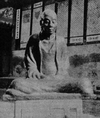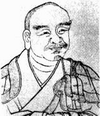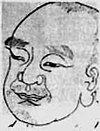–
“The same ultimate truth is realized by all
free Adepts,
and they communicate it in a particular fashion in their time and
place”
Da Free John, 1982 – What
is the Conscious Process
“That is why it is said there are so many masters. They are always available.
They can always intervene. They can always be called upon.”
Why Are There So Many Masters?
The following is from:
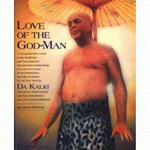
The
Love of the God-Man
A Comprehensive Guide to the Traditional and Time-Honored
Guru-Devotee Relationship,
the Supreme Means of God-Realization,
As Fully Revealed for the First Time by Da Kalki
(The Divine World-Teacher and True Heart-Master, Da Love-Ananda
Hridayam)
By James Steinberg
SHANKARA (Sankara,
Sankaram, Sankaracarya, Sankaracharya,
SankarAcArya) (788-820) Shankara was a
great teacher of Advaita Vedanta who was likely
born in the village of Kaladi in Kerala, South
India, in 788 (although some list this date as the
beginning of his life as a renunciate). Legend has
it that he mastered the Vedas at age
eight. Shankara
critiqued the philosophical and religious
traditions of his day and singlehandedly brought
about a decisive cultural renaissance. He (and
other jnanis like him) gave overwhelming testimony
to the fact that spiritual renunciation is not
synonymous with an inactive, purely contemplative
life. Shankara wrote a
large number of Sanskrit commentaries on sacred
Hindu literature and founded five important
monasteries. ( Gorakh,
Goraksa, Goraksha, Gorakhnatha, Gorakshanatha ) (
9th or 10th century ) One of the best
known and one of the greatest masters (some say
originator) of Hatha Yoga and associated Shaivism.
May have been from the Punjab, and some suggest, he
is first to write in Hindi, or Punjabi. The Gorakh-Bodh
(“Illumination of Gorakh) is an ancient Hindi text
(12th century ?) which consists of the supposed
dialogue between Gorakhnath and his Teacher,
Matsyendra. [ The lineage
traces itself to Adinatha (Adinath, Nath, Natha)
and then Shiva himself ]. The 33 verses
deal with the such diverse topics as: the life of
the avadhuta, shunya (void), nada (sound), chakras,
japa, and sahaja. Gorakhnath is
thought to have authored the Goraksha-Samhita, the
Amaraugha-Prabodha, the Jnata-Amrita-Shastra, and
the Siddha-Siddhanta-Paddhati and
others. There is also an
old Natha sect text titled,
Gorakh-Upanishad. RAMANUJA Ramanuja ( 1017 – 1137
) Born in South
India, Ramanuja was founder of the Vishista-Advaita
(“Qualified Nondualism”) school of Vedanta and
leading theologian of the medieval bhakti
(devotion) movement. He championed Vaishnavism
(devotion to Vishnu) and was the chief opponent of
Shankara’s philosophy. Ramanuja taught
that the Absolute is not merely impersonal and
unqualified but includes in its being the
phenomenal world. He wrote brilliant commentaries
on the Bhagavad Gita, the Brahma-Sutra and the
major Upanishads. JNANESHVAR Jnaneshvar was a
great Siddha, mystic and poetic genius of
Maharashtra, India who died at the age of 21 in
enstasy. His spiritual roots were in both the nath
and bhakti traditions and listed his lineage as
Shiva, Shakti, Matsyendra, Gorakhnath, Gahini and
Nivritti (his elder brother). At the age of fifteen
(1290) he is said to have delivered ex tempore the
nine-thousand verses of his poetic commentary on
the Bhagavad Gita; Jnaneshvari (Jnaneshwari) or
“Goddess of Wisdom” [ also called
Bhava-Artha-Dipika (“Light on the meaning of
Being”)]. Jnaneshvar’s
teaching was non-dualist, saying that the mainifest
world is a “sport” (vilasa) of the Absolute; the
Love of the singular Reality, and regarded bhakti
(devotion), the means to liberation. KABIR ( 1440 – 1518
) The son of a
Moslem weaver, Kabir was born in Benares, India. A
married householder, he earned his livelihood from
weaving and became one of the most influential
figures of northern India and has been hailed as
the “Father of Hindi literature”. His spiritual
growth was equally guided by the Sufi poetry of the
great Persian mystics (Rumi among them) and by the
Hindu teacher Ramananda. While Kabir converted to
Hinduism, all his life Kabir sought to unite the
conflicting streams of Muslim and Hindu
spirituality. He attracted both Muslim and Hindu
disciples and referred to God as both Allah and
Rama. He spoke the
language of the ordinary people, infusing it with
the brightness of his Realization. In many popular
verses, Kabir extols the supreme help afforded by a
true Master and praises the devotion in the
disciple. He sings of the “dice of love” which are
to be cast on the body as the board, according to
the throw learned from the Heart-Master. His following
today, called the Kabirpanthir, still numbers
nearly one million adherents. He was also a
forerunner of Sikhism, which was founded by Guru
Nanak, his disciple. CHAITANYA ( 1486 – 1553
) Chaitanya was a
legendary bhakta and master of God-intoxication,
whose life story reads like the play and sport of
Krishna (and some believe him to be the
re-incarnation). For the last twelve years of his
life, he is said to have lived in perpetual
devotional ecstasy or “Divine Madness”
(“divyaunmada”). A tall, muscular
man, he considered himself the bride of Krishna.
Chaitanya demonstrated in his own life how the dry
ritualism of his brahmanical peers could be turned
into true worship. Lost in God, he would dance,
often in public, and with his entranced dance
attract others into God-Communion. TUKARAM ( Tukarama,
Tukaram Maharaj, Tuka ) ( 1608 – 1649 ) (
1598 – 1650 ) Tukaram was a
bhakta by nature and farmer by trade and was likely
born at Dehu near Poona in the State of Maharashtra
where his ancestral home is still said to
exist. His family were
successful grain sellers but the priestly class
considered him lowborn. (Tukuram’s own
farming fortune took a bad turn later in life when
a famine resulted in the death of his first wife
and son by starvation.) Tukuram inherited
devotion to God from his family. The family deity
was Vitthal, or Pandurang— a form of Krishna
worshipped in the famous temple in Pandharpur. His
devotion took greater focus after the disaster that
befell his family and many others. Some say Tukaram
received his spiritual initiation from Chaitanya in
a dream. Others say that it was during a period of
intensive meditation that Tukaram’s Guru, Babaji
Raghavachaitanya, initiated him in 1619, whereupon
he renounced his inheritance gave himself
completely to meditation and
kirtan. Tukaram believed
the body to be the temple of the living lord and
idol worship and rituals had no meaning for him.
His all-embracing love and forbearance and his
special compassion for animals compare with the
saintliness of St. Francis of
Assisi. He had much need
to be forbearing, for his envious comtemporaries
from the upper classes condemned and reviled him
for his spontaneous witnessing of the Love of God.
Oblivious to the misunderstanding and spite of his
detractors, Tukaram bequeathed to his fellow men
and posterity many wonderful songs, chants and
poems in praise of the Divine and the spiritual
Way. Nearly five thousand lyrics in the Marathi
language have been consolidated into a volume known
as the Tukaramachi Gatha. RAMPRASAD
( 1718 – 1778
) Ramprasad Sen was
a Bengali Hindu poet-saint who worshipped the
Divine in its female aspect, as Kali or the Mother
Goddess. He was an exemplar of “bhakti yoga”,
charactersized by practice of direct and intensely
personal forms of relationship with the Divine
Reality. Ramprasad’s
poetry expresses a passionate mysticism, filled
with intense longing and struggle. He addresses the
Mother Goddess in all of Her seemingly
contradictory aspects—as loving mother and
“the Dark One’, as the Transcendental Reality and a
disreputable trickster embodying the forces of
“maya” or illusion. While Ramprasad’s
relationship to the Divine Mother seems at times
petulant, irreverent, even blasphemous, such forms
of address and acknowledgment are occasionally
employed in Indian devotional verse, and do not
contradict his bhakti orientation. Ramprasad
translators Leonard Nathan and Clinton Seely
write: [This]
convention is a means of revealing the power in
that relation, once established, to transform every
kind of emotion—hostile as well as
loving— into devotional passion through the
act of total concentration on the deity. [It
also exhibits] what is essential in the
relations between devotee and
deity. For when
Ramprasad accuses Kali of indifference, he is also
suggesting her total detachment from the world, the
very quality that he needs to achieve for release,
just as when he acesses her of shameless nakedness,
intoxication, and madness, he is, in fact,
cataloguing some of her most potent attributes: the
awesome presence of real being, without the
conventional covering of appearance; the joy of
true freedom, and its refusal to be contained in
rational or moral categories…. The convention of
accusation and insult, in short, provides Ramprasad
with an intensity and depth of feeling to match the
awesome crisis of salvation. AKKALKOT MAHARAJ (Shri Swami
Samarth) (19th
century) Akkalkot Maharaj,
recognized by many as an incarnation of Dattatreya,
first appeared in Akkalkot in 1856. There he stayed
for nearly twenty-two years. When asked about his
parentage and childhood, he gave various, sometimes
contradictory, answers to
inquirers. One account put
forth by deotees asserts that after traveling in
the Himalayas, the Swami sat in samadhi for three
hundred years in a dense forest. He became
completely covered by anthills, and a large tree
grew beside him. Once a woodcutter came to the
forest and chose that particular tree for cutting.
Laying his axe first to the anthill, he was
surprised to see blood oozing from it. Pulling down
the anthill, he discovered the Swami beneath
it. Roused from
samadhi, the Swami declared the incident to be
Divinely ordained as it was time for him to go into
the world and continue his mission. The Swami is
said to have then wandered for a hundred years,
performing many miracles, before appearing in
Akkalkot. The Swami was
unpredictable, appearing mad to many, and full of
miracles. He loved his devotees with a great
passion, and like other Adepts of the Crazy Wise
style, he was paradoxically full of both human and
Divine qualities. Once, when asked who he was, he
replied, “I am this infinite universe; I am
everywhere. Yet my favorite resorts are Sakyodri,
Girnar, Kasi, Mathapur, Karveer, Panchaleswar,
Audumbar, Karanjnagar, Narasimhvadi, and Gangapur.”
MAHARISHI BRAHMANANDA
BRAHMACHARI ( ? – 1906
) Not known in the
West and barely known in the East, Brahmananda, of
Gangonath, Baroda, India is known to have activated
the spiritual process in others by his mere glance.
A man of miracles, Brahmananda lived in extreme
austerity in a remote cave, though during a severe
famine he was found dispensing food to thousands of
victims from a seemingly inexhaustible
supply. TRAILANGA SWAMI There are four
short references to Trailanga Swami in The Gospel
of Ramakrishna. The longest, in Swami
Nikhilananda’s introduction, describes
Ramakrishna’s vision of Siva in Benares; “with
ash-covered body and tawny matted hair, serenely
approaching each funeral pyre and breathing into
the ears of the corpses the mantra of
liberation.” He paid a visit
to Trailanga Swami, “the celebrated monk, whom he
later declared to be a real paramahamsa, a
veritable image of Siva.” Ramakrishna also
describes the Swami as having taken a vow of
silence “when he is truly aware of Unity,” but also
quotes him regarding the mind, so apparently he was
not always silent (or wrote). In Autobiography
of a Yogi, Paramahansa Yogananda, describes
Trailanga Swami on pages 291-295; TOTAPURI (Tota
Puri) According to
Swami Nikhilananda, in his introduction to the The
Gospel of Sri Ramakrishna, Totapuri was likely born
in the Punjab. He was trained at an early age in
Advaita Vedanta and looked upon the world as an
illusion. He regarded the
gods and goddesses (and all its rituals) of
dualistic worship as mere fantasies of the mind. He
spent forty years practicing austere disciplines of
self-exertion and will-power on the banks of the
sacred Narmada and “liberated himself” from the
sense objects of the universe and realized his
Identity with the Absolute. By the time he
arrived at Dakshineswar Temple (after a visit to
the estuary of the Ganges) in 1864, he was a
wandering monk of the Shankara Order and the head
of a monastery in the Punjab and claimed leadership
of seven hundred sannyasins. Totapuri
recognized in Sri Ramakrishna an advanced seeker of
Truth and thought he would be a fit recipient of
the Vedantic ideal. He therefore asked Sri
Ramakrishna whether he would like to practice
Vedanta. Sri Ramakrishna replied that he would do
so, if his ‘Mother’ permitted him. Totapuri asked
him to get his mother’s permission quickly, as he
would not stay at Dakshineswar for long. Sri
Ramakrishna went to the Kali temple and heard Her
command: ‘Yes, my boy, go and learn of him. It is
for this purpose he has come here. He was “a teacher
of masculine strength, a sterner mien, a gnarled
physique, and a virile voice”. Ramakrishna would
soon affectionately address the monk as Nangta, the
“Naked One”, because his total renunciation of the
world included clothing. Ramakrishna
referred to Totapuri as a Jnani and liked to tell
the story of Totapuri giving him the Gift of the
Absolute while he, Ramakrishna, gave Totapuri the
Gift of Worship of the Goddess. RAMAKRISHNA ( born Gadadhar
Chattopadhyay ) ( 1836 – 1886 )
VIVEKANANDA Swami
Vivekananda ( 1863 – 1902
) SHIRDI SAI BABA Sai Baba of
Shirdi ( 1831( ?) – 1918
) UPASANI BABA (this
page is under construction) NARAYAN MAHARAJ Narayan
Maharaj ( 1885 – 1945
) RAMANA MAHARSHI Ramana
Maharshi ( 1879 – 1950
) PADMASAMBHAVA (Padmasambhava,
Sambhava, Padmakara, Pema Jungney, Guru Rinpoche,
Precious Guru, Master Padma, Precious Master, Guru
Tsokyi Dorje, Loden Chogsey, Shakya Senge, lit.
“Lotus-Born”) ( 8th century ) ( 717 ? – 762
) When Lord Buddha
was about to pass into final Nirvana, he said to
his followers, “This worldly life is transitory and
separation is inevitable. But eight years from now,
in the midst of an immaculately pure lake in the
northwest
land of
Uddiyana, one will appear who is wiser and more
powerful than myself. Born from the center of a
lotus blossom, he will be known as Padmasambhava
and will reveal the teachings of the Secret Mantras
to deliver all beings from misery.” ( Tilo, Tillo,
Tillipa, Tailopa, Telopa, sNum-pa, Mar-nag
‘tsong-mkhan, Til-brdung-mkhan )
(9881069) The Song of
Mahamudra (excerpt) by Tilopa Mahamudra is
beyond all words ( 1016
1100 ) Although born in
the Fire-Male-Dragon year of 1016 in Bengal, India,
Naropa occupies a “unique position” in the history
of Tibetan Buddhism. “To the present day his life
is held up as an example to anyone who aspires
after spiritual values, which are never realized
the easy way but only after years of endless toil
and perseverance. It took Naropa twelve years of
ardent devotion and indefatigable service to his
Guru Tilopa to attain his goal: the overwhelming
experience of the Real in direct knowledge. Apart
from this, Naropa also marks the beginning of a new
and rich era of Buddhist thought in Tibet, while at
the same time he is the culmination of a long
tradition. None of his contemporaries or successors
in India can compare with him in depth of
experience When he had
reached the age of eleven he went for study to
Kashmir, at that time the main seat of Buddhist
learning. He stayed there for three years and
having acquired a solid knowledge of the essential
branches of learning he returned home in A.D. 1029.
A large number of scholars went with him and for a
further three years he continued his studies in
their company. But then in A.D. 1032 he was forced
to marry. His wife came from a cultured Brahmin
family. The marriage lasted for eight years, then
it was dissolved by mutual consent . .
. In A.D. 1049
Naropa went to Nalanda where he took part in a
religious-philosophical debate. He was successful
in this and was elected abbot, a post he held for
eight years. The year A.D. 1057 was decisive for
his spiritual development. He resigned from his
post and set out in search of Tilopa who had been
revealed as his Guru in a vision. After an ardent
search which almost ended in suicide he met Tilopa
and served him for twelve years until the latter’s
death in A.D. 1069. Naropa himself died in the
Iron-Male-Dragon year (A.D. 1100). His mortal
remains were preserved in the Kanika (Kaniska)
monastery at Zangskar.” MARPA (the
Translator) (Marpa Lotsawa,
Marpa Chökyi Lodrö) ( 1012 – 1097 ) (
1012 – 1099 ) MILAREPA Milarepa (Mi-La-Ras-Pa,
Jetsün Milarepa,
Jetsèun-Milarepa) ( 1040 – 1123 ) (
1040 – 1143 ) ( 1052 – 1135 ) DRUKPA KUNLEY BODHIDHARMA ( Dharma, Tamo in
Chinese, Daruma in Japanese ) (470-543)
(?-528) The First
Patriarch (Chinese Line) Bodhidharma was
the 28th Patriarch in the Indian lineage (after
Buddha) and probably not acknowedged to be the
First Patriarch in the Chinese line until the time
of the Sixth Patriarch (Hui Neng) According to D.
T. Suzuki 1 , Dharma was the third son of the King
of Hsiang-chih (Kasi?) in southern India. He became
a monk and studied under Prajnatara (the 27th
Indian Patriarch) for some forty years, it is
said. “After the death
of his teacher, he assumed the patriarchal
authority of the Dhyana school, and energetically
fought for sixty years or more against heterodox
schools. After this, in obedience to the
instruction which he had received from Prajnatara,
he sailed for China, spending three years on the
way. In the year 520
he at last landed at Kuang-chou in Southern China
… [Finding ill-treatment at the hands of both
commoners and elite, Dharma] went to the State
of Northern Wei, where he retired into the Shao-lin
monastery. It is said that he spent all his time,
during a period of nine years there, silently
sitting against the wall and deeply absorbed in
meditation, and for this singular habit he is said
to have earned the title of “the wall-gazing
brahmin”. HAN SHAN – SHIH
TE “Han-shan and
Shih-te (Kanzan and Fittoku)” from a Japanese
hanging scroll by Hashimoto Gaho. Han-shan (“Cold
Mountain”), and his sidekicks Shih-te (“Pick Up” or
“Foundling”), and Fengkan (“Big Stick” as he was
six-foot tall), were known as the “Tian-tai Trio,”
wandering Tang Dyansty lunatic hermit-monks, who
sometimes lived at the Guoqing Temple of the
Tian-tai sect in the Tian-tai mountain range by the
East China Sea. They, like Monk Ji-gong, were known
for their unconventional behavior as well as their
poetry. “Han Shan and
Shih-te are two inseparable characters in the
history of Zen Buddhism, forming one of the most
favourite subjects of Sumiye painting by Zen
artists. Han Shan was a poet-recluse of the T’ang
dynasty. His features looked worn out, and his body
was covered in clothes all in tatters. He wore a
head gear made of birch-bark and his feet carried a
pair of sabots too large for them. He frequently
visited the Kuo-ch’ing monastery at T’ien-tai,
where he was fed with whatever remnants there were
from the monk’s table. He would walk quietly up and
down through the corridors, occasionally
talkingaloud to himself or to the air. When he was
driven out, he would clap his hands and laughing
loudly would leave the monastery.” HUI NENG ( Hui-Neng,
Hui-neng, Dajian Huineng, Hui-Neng Liu-Tsu-ta, Wei
Lang ) ( Yeno, Eno
[in Japanese] ) ( The Sixth
Patriarch, The Sixth Ancestor )( Chinese Line
) ( 638 – 713
) According to D.T.
Suzuki 2 “The Sixth Patriarch, Hui-neng, was a
great religious genius, and his life marks an epoch
in the history of the Zen Sect in the Far East. It
was due to him that his Sect, hitherto
comparatively inactive and rather tending to
ascetic quietism, now assumed a more energetic role
in the demonstration of its peculiar features, and
began to make its influence more and more felt,
especially among the thoughtful class of people.,”
(not to mention Enlightenment to the prepared
few). According to
Fa-hai 3 , (early biographer and contributor to the
Hui Neng legend) in his introduction to the
Platform Sutra: ” When he was born beams of light
rose into the air and the room was filled with a
strange fragrance. At dawn two mysterious monks
visited the Master’s father and said: “The child
born last night requires an auspicious name; the
first character should be ‘Hui,’ and the second,
‘Neng'”. “What do ‘Hui’
and ‘Neng’ mean?” inquired the father. The priest
answered: “‘Hui’ means to bestow beneficence on
sentient beings; ‘Neng’ means the capacity to carry
out the affairs of the Buddha.” When they had
finished speaking they left, and there is no one
who knows where they went.” HUAI JANG (Huai-Jang Nan-Yueh, Hoai
Nhuong) The famous
tile-grinding story refers to Great Master Ma Tsu
Tao-I’s meeting with his teacher, Huai Jang of Nan
Yueh, one of the foremost heirs of the Sixth
Patriarch Hui Neng. Here is the excerpt from the
Ching Te Ch’uan Teng Lu (Record of Transmission of
the Lamp) as rendered by Cleary and Cleary in the
appendix to The Blue Cliff Record: During the K’ai
Yuan era (713 – 741) an ascetic named Tao-I was
dwelling in the Ch’uan Fa Temple; all day he sat
meditating. Huai Jang knew that he was a vessel of
Dharma, and went to question him: “Great Worthy,
what are you aiming at by sitting
meditation?” Ma replied, “I
aim to become a Buddha.” Jang then took a
tile and began to rub it on a rock in front of the
hermitage; Ma asked him what he was doing rubbing
the tile. Jang said, “I am
polishing it to make a mirror.” Ma said, “How can
you make a mirror by polishing a tile?” Jang said,
Granted that rubbing a tile will not make a mirror,
how can sitting meditation make a
Buddha?” Ma asked, “Then
what would be right?” Jang said, “It is
like the case of an ox pulling a cart: if the cart
does not go, would it be right to hit the cart or
would it be right to hit the ox?” Ma didn’t
reply. Jang went on to
say, “Do you think you are practicing sitting
meditation, or do you think you are practicing
sitting Buddahood? If you are practicing sitting
meditation, meditation is not sitting or lying. If
you are practicing sitting Buddahood, ‘Buddha’ is
not a fixed form. In the midst of transitory
things, one should neither grasp nor reject. If you
keep the Buddha seated, this is murdering the
Buddha; if you cling to the form of sitting, this
is not attaining its inner principle.” Ma heard this
teaching as if he was drinking ambrosia. He bowed
and asked, “How shall I concentrate so as to merge
with formless absorption?” Jang said, “Your
study of the teaching of the mind ground is like
planting seeds; my expounding the essence of
reality may be likened to the moisture from the
sky. Circumstances are meet for you, so you shall
see the Way.” Ma also asked,
“If the Way is not color or form, how can I see
it?” Jang said, “The
reality eye of the mind ground can see the way.
Formless absorption is also like this.” Ma asked, “Is
there becoming and decay, or not?” Jang said, “If
one sees the Way as becoming and decaying,
compounding and scattering, that is not really
seeing the Way. Listen to my verse: Mind ground
contains various seeds; When there is moisture, all
of them sprout. The flower of absorption has no
form; What decays and what becomes?” Ma heard this and
his understanding opened up. His heart and mind
were transcendent. He served his master for ten
years, day by day going deeper into the inner
sanctum. (This meeting
probably took place in the mid 730’s. Huai Jang had
six adept pupils, but he said it was Ma Tsu who
realized his “heart.”) SHIH T’OU (Shitou Xiqian,
Shih-t’ou Hsi-ch’ien, Shitou Heshang) (Kao Yao, Gao
Yao, Sekito Kisen) ( 700 – 790
) Song of the Grass
Shack I’ve built a
grass shack with nothing of value inside. After a
good meal, I like to take a nice nap. The grass
thatching still looks new; When it wears out, I’ll
add fresh thatch to the roof. The person inside the
shack is always present, But you won’t find him
inside or out. He doesn’t hang out with worldly
people, And he doesn’t like the things they like.
This little shack contains the entire universe, And
my physical body is integrated with it. Great
Bodhisattvas don’t doubt my ideas, Although humans
may think them strange. If you say that my hut
looks shabby, I’ll answer. That the One Mind
abides right where it is. East or west, north or
south, A solid foundation is what counts. With
green pines hanging over the roof And bright
windows in the walls, not even a royal palace can
compare with my shack. With a monk’s robe over my
shoulders And a hood over my head, I’ve got no
worries at all. It’s not that I praise myself for
living here, Like some merchant pushing his
product. It’s just that when the twilight comes, My
mind is limitless from front to back. MA TSU (Ma Zu, Mazu
Daoyi, “Daji”, Ma To, Ma To Dao Nhat) ( 708 – 807 ) (
709 – 788 ) HUI
HAI PAI
CHANG HUANG
PO LIN
CHI HAN
SHAN HSU
YUN DOGEN IKKYU HAKUIN (this
page is under construction) (this
page is under construction) (this
page is under construction) (this
page is under construction)
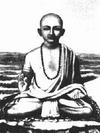
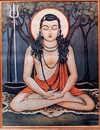
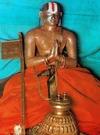

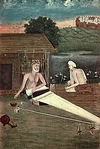
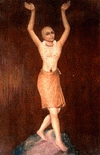
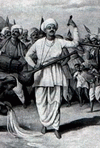
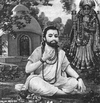
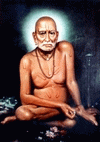
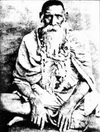
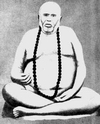
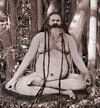
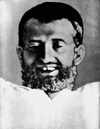
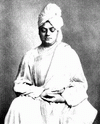

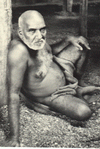
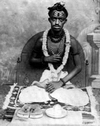
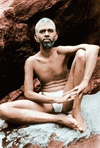

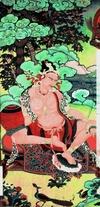
And symbols, but for you, Naropa,
Earnest and loyal, must this be said.
The Void needs no reliance,
Mahamudra rests on nought.
Without making an effort,
But remaining loose and natural,
One can break the yoke
Thus gaining Liberation.
If one sees nought when staring into space,
If with the mind one then observes the mind,
One destroys distinctions
And reaches Buddhahood.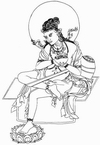

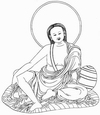
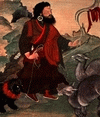
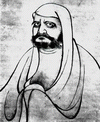
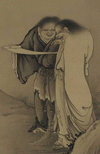
D. T. Suzuki, Essays in Zen Buddhism, Third Series,
1953, p. 160 